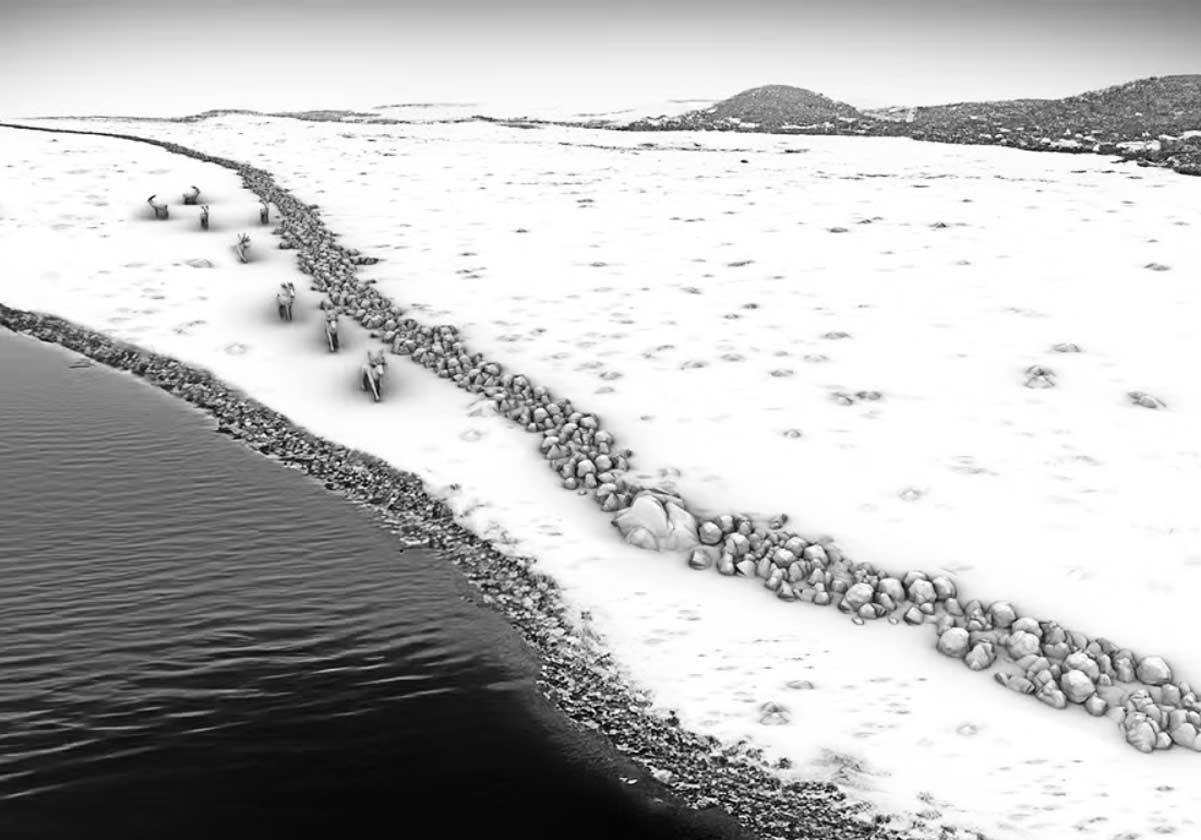In a thrilling discovery, scientists have stumbled upon a submerged Stone Age wall lying silently beneath the waves off Germany’s Baltic coast. This ancient structure, named the Blinkerwall, stretches for nearly a kilometer along the seafloor in the Bay of Mecklenburg. But what makes it truly remarkable? It may well be Europe’s oldest known megastructure built by humans.
The Blinkerwall: A Stone Age Enigma
The Blinkerwall was initially spotted by accident when researchers operated a multibeam sonar system during a student trip about 10 kilometers (approximately 6 miles) offshore. Closer inspection revealed approximately 1,400 smaller stones, meticulously positioned to connect nearly 300 larger boulders. Many of these boulders were so massive that moving them would have been beyond the capabilities of human groups.
A Purposeful Construction
While the exact purpose of the Blinkerwall remains elusive, scientists have put forth intriguing theories. Here are some possibilities:
- Hunting Lane: The wall might have served as a driving lane for hunters pursuing herds of reindeer. As Jacob Geersen from the Leibniz Institute for Baltic Sea Research explains, “When you chase the animals, they follow these structures; they don’t attempt to jump over them.” The wall could have acted as an artificial bottleneck, directing the reindeer toward a second wall or the nearby lake shore.
- Ambush Strategy: Alternatively, the wall could have forced the animals into the nearby lake, slowing them down and making them easy prey for humans lying in wait in canoes armed with spears or bows and arrows.
Unlikely Origins
The sheer size and shape of the 971-meter-long wall make it unlikely that it formed through natural processes. The angle of the wall changes direction when it meets the larger boulders, suggesting intentional positioning of the smaller stones to link them up. In total, the wall’s stones weigh more than 142 tonnes.
Ancient Origins and Submersion
If the Blinkerwall indeed served as an ancient hunting lane, it likely predates 10,000 years and was submerged due to rising sea levels around 8,500 years ago. This remarkable find places the Blinkerwall among the oldest known examples of hunting architecture in the world and potentially makes it Europe’s oldest man-made megastructure.
As researchers continue to explore this Stone Age enigma, the Blinkerwall stands as a testament to our distant ancestors’ ingenuity and resourcefulness. Perhaps it’s time to rewrite the history books and give this submerged wall its rightful place in the annals of human achievement.








